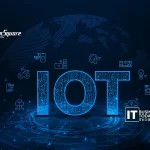Japan has unveiled a next-generation solar panel technology using perovskite solar cells that could significantly improve output, flexibility and deployment. Various reports suggest the government and industry expect installations of the panels to reach an electrical generation capability of 20 GW, or roughly the equivalent of “20 nuclear reactors” in name-plate capacity terms, by around fiscal 2040.
These ultra-thin, light, and flexible PSC modules can be installed in places where traditional silicon-based panels cannot-for example on building façades, vehicle roofs, street-furniture, and other urban infrastructure. Because land is scarce in Japan, that flexibility is key.
The Japanese government has placed PSCs at the heart of its revised energy-strategy, citing the goal of achieving net-zero greenhouse-gas emissions by 2050 and boosting the share of renewables in the energy mix. Japan’s advantage in this push includes the country’s position as the world’s second largest iodine producer-iodine being a critical raw-material for PSC manufacturing.
Also Read: Saudi Aramco and Yokogawa deploy AI Agents at Gas Plant
Why it matters for Japan’s tech industry
This development has major implications for the technology sector in Japan:
- Re-emergence of Japan in solar manufacturing and materials
Japan used to be the leader in global solar manufacturing, but lost volume share to subsidized competition. Now is the chance for Japan’s tech and materials sector to regain leadership by focusing on advanced PSC technology. The supply-chain advantage in iodine gives Japanese firms a secure edge in raw-material sourcing.
- Shift from Hardware-Only to Integrated Tech-Platforms
Conventional PV modules are highly hardware- and installation-driven. PSCs demand not just materials but also innovations in manufacturing processes, digital monitoring, thin-film coating, smart integration with buildings, and energy-management software. That broadens the value chain for technology companies beyond the module maker.
- Urban deployment, IoT & smart infrastructure
Given the panels are flexible and deployable on many surfaces, they align with Japan’s smart-city and infrastructure innovation agenda. Tech-companies working in IoT, building automation, Edge-computing, and energy informatics have a new field of opportunity.
- Energy security, supply-chain resilience & high-tech exports
With the sustained, global supply-chain pressures-for materials, manufacturing capacity, and technology-Japan’s domestic capability in developing PSCs offers strategic value. The successful technology companies in the PSC system could export modules, materials, and services globally, creating an export boost for Japanese firms.
Effects on businesses operating in this industry
The ripple-effects across business segments are striking:
Solar module & material manufacturers: Firms that manufacture PSC materials, such as iodine-based compounds, coating technology, thin-film processes, flexible substrates, and module packaging, will have increasing demand.
Building materials, construction and real-estate tech firms: With the integration of PSCs in façades, windows, roofs, and vehicles, construction, real-estate, and façade engineering firms have to work with technology companies to embed energy-harvesting capability.
Energy-system integrators and smart-grid firms: With the large output from PSC integrating into the grid, network systems, storage, monitoring, and energy-management platforms will have to be scaled up. Companies providing sensors, analytics, and energy management systems will be beneficiaries.
Start-ups & software vendors: The transition demands digital services such as monitoring module performance, predictive maintenance, urban-deployment analytics, building-integration software, and Edge-cloud systems. Startups active in these spaces will have more aperture for growth.
Export and global supply-chain players: Japanese firms that develop an advanced PSC manufacturing ecosystem, system-integration capability, and quality assurance stand to win in exports. This can revive Japan’s share in the global solar market.
Challenges and strategic points to watch
Yet, with the promise comes the challenge:
Durability and lifecycle performance: Questions are raised towards PSCs over long-term stability, degradations in realistic conditions such as heat, humidity, and corrosion, and lifecycle costs. These must be resolved for commercial scale deployment.
Cost-competitiveness versus mature silicon panels: Silicon panels are commoditized and low-cost. For PSCs to scale, the manufacturing cost must fall, yield must improve, and lifecycle must match or exceed that of silicon panels. Japan has set targets, such as JPY 10/W by 2040, but execution remains.
Grid integration & storage: Large solar deployment involves variability. To provide regular output, comparable to “20 nuclear reactors”, Japan needs to address supporting storage, grid flexibility, and investment in infrastructure. Without that, the output will remain intermittent.
Scale-up and market adoption: Going from prototype/lab to commercial scale is non-trivial. Japanese firms will have to ramp up manufacturing, secure supply-chains, certify via standards, and manage deployment risk.
Global competition and pace of innovation: Other countries and materials companies are also after next-generation solar, such as tandem cells and thin-film materials. Japan has to keep its edge in R&D, efficiency, and cost curve.
Conclusion
Japan’s unveiling of what’s being billed as a “solar super-panel”-using perovskite solar cells, with deployment goals equal to the capacity of 20 nuclear reactors-is more than just an energy headline. It represents a strategic technology-industry shift: from hardware manufacturing to integrated high-tech materials, software, and systems; from commodity solar to advanced deployment in urban settings; from import-dependence to domestic supply-chain strength.
The opportunities for Japanese tech, materials and construction, energy-systems, and software businesses, among others, are great-but so also are the demands. Success will depend on how well lab innovation is translated to volume manufacturing; digital systems embedded in infrastructure; global supply chains secured; and cost and durability performance guaranteed. If Japan executes well, the country can reclaim leadership in solar technology, renewables innovation, and export growth, and the broader tech industry can benefit.







